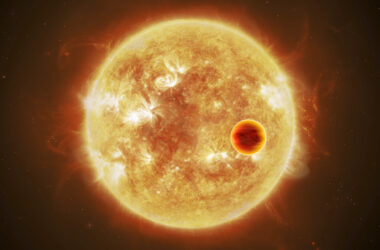The next gen of satellites is all set to pinpoint producers of greenhouse gases across the globe.

At least a dozen companies and countries are now on track to launch satellites which can measure concentrations green-house gases from orbit. Some are sensitive enough to pinpoint the producers of these heat-trapping gases down to an individual leak on an oil rig.
Gases like methane are thought to account for around 25% of human-made global warming – and being able to track both countries, companies and even specific factories will help regulators and id the worst contributors to climate change.
Already, regulators are talking with satellite operators to track down individual methane plumes. These can come from obvious sources, like oil and gas producers, but also waste-water plants, landfills and even dairies.
In the US, the state of California has recently partnered with Planet Labs Inc to track down the worst offenders. Tracking could help spot gas leaks like the 2015 Sempra Energy which saw a broken oil well near Los Angeles release 100,000 tons of methane – the largest leak in US history.
Spotting and quickly plugging leaks should be a no-brainer for the oil and gas industry. Leaks not only represent an environmental catastrophe but lost energy which they could sell on. Laura Cozzi, the International Energy Agency’s chief energy modeller has estimated that if the industry could address existing leaks they would cut their methane emissions by around 40%. This would be the same as shutting 2/3rds of Asia coal-fired power plants.
However, while the new satellite tech will be useful in tracking specific peaks in emissions it is still difficult to track more diffuse sources of methane emmssions.

Farming actually leads as the largest source of global methane emissions ahead of oil and gas, and mining. Cows, sheep and other livestock ’emit’ methane as they digest food.
Public pressure on the companies that rely on farming – like McDonalds – is building and new techniques are emerging which could help reduce emissions from improved food sources for cattle to introducing special bacteria into their diet.
The boom in satellite tech has been driven by the success of CubeSat technology in the last decade.
Prices for a CubeSat launch to a low-earth orbit have plummeted to around £255k.
While the scientific community is waiting to see the next generation of satellites prove their accuracy and consolidate readings from different companies and government, the technology behind them isn’t going away and the next few decades should see a greater understanding of who and what produces the most greenhouse gas leading to better regulations and long term reductions.







